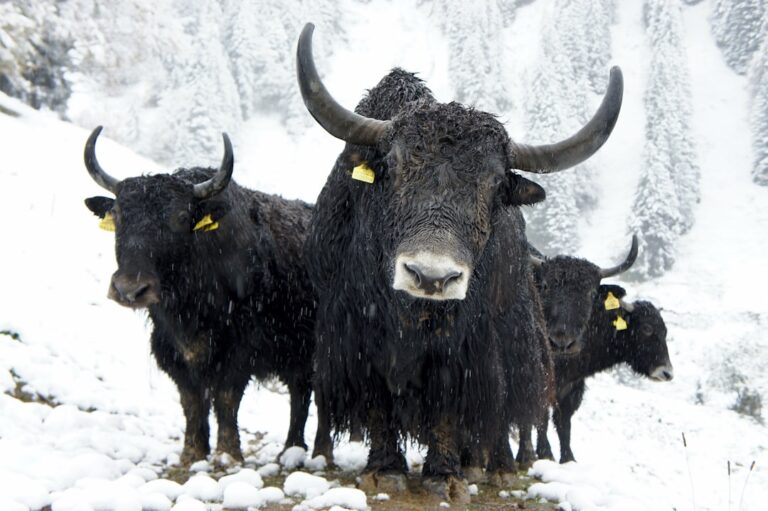Suet feeders are a popular choice for bird enthusiasts because they offer a high-energy food source that is especially beneficial for birds during the colder months. Suet is a high-fat substance that provides birds with the necessary calories to maintain their body temperature and energy levels in the winter. It is particularly attractive to insect-eating birds such as woodpeckers, nuthatches, and chickadees, as it mimics the high-fat content of their natural diet. Suet feeders are also a great way to attract a variety of bird species to your yard, as they can be filled with different types of suet blends to cater to the preferences of different birds. Additionally, suet feeders are easy to maintain and can be hung in various locations around your yard, making them a convenient and versatile option for bird feeding.
Suet feeders are also a great way to observe birds up close and personal. Placing suet feeders near windows or in areas where you spend a lot of time outdoors can provide hours of entertainment as you watch the birds come and go. Suet feeders are also an excellent way to attract birds that may not visit traditional seed feeders, such as woodpeckers and wrens. By offering suet in your yard, you can create a welcoming environment for a wide variety of bird species, adding diversity and excitement to your birdwatching experience.
Key Takeaways
- Suet feeders provide essential nutrients and energy for birds, especially during colder months
- Choose a suet feeder that is durable, easy to clean, and has a secure closure to prevent access by unwanted animals
- Select suet with a high fat content and a variety of ingredients to attract a wide range of bird species
- Place your suet feeder in a sheltered area with good visibility for bird watching
- Regularly clean and maintain your suet feeder to prevent the spread of disease and ensure bird health
Choosing the Right Suet Feeder for Your Yard
When it comes to choosing a suet feeder for your yard, there are several options to consider. The most common type of suet feeder is a wire cage or mesh basket that holds the suet cake in place while allowing birds to peck at it. These feeders come in various sizes and designs, including single-cake feeders, double-cake feeders, and even suet log feeders. Another popular option is a suet feeder that is designed to attach to the side of a tree or pole, allowing birds to cling to the feeder while they feed. These feeders are often made of wood or metal and can be a more natural-looking option for your yard.
For those who want to attract a wider variety of bird species, there are also suet feeders that include additional perches or feeding ports for birds that may not be able to cling to a traditional suet cage. These feeders can accommodate larger birds such as starlings and jays, as well as smaller birds that may not be able to access the suet in a standard feeder. When choosing a suet feeder, it’s important to consider the size and type of birds you want to attract, as well as the location where you plan to hang the feeder. By selecting the right suet feeder for your yard, you can ensure that you provide a welcoming and accessible food source for a wide variety of bird species.
Selecting the Best Suet for Attracting a Variety of Bird Species
When it comes to selecting suet for your feeder, there are several options available that cater to different bird species and preferences. Traditional suet cakes are made from rendered beef fat and mixed with various seeds, nuts, and fruits to create a high-energy food source for birds. These cakes are often available in different flavors such as peanut, berry, or insect blend, which can attract a wider variety of bird species to your yard. In addition to traditional suet cakes, there are also suet nuggets and plugs that can be placed in specialized feeders or scattered on the ground for ground-feeding birds.
For those who want to offer a more natural food source, there are also suet recipes that can be made at home using ingredients such as lard, peanut butter, and cornmeal. These homemade suet recipes can be customized with different seeds, fruits, and nuts to cater to the preferences of specific bird species. When selecting suet for your feeder, it’s important to consider the dietary needs and preferences of the birds in your area, as well as the time of year. By offering a variety of suet blends and flavors, you can attract a diverse range of bird species to your yard and provide them with the essential nutrients they need to thrive.
Placing Your Suet Feeder in the Ideal Location for Bird Viewing
| Location | Advantages | Disadvantages |
|---|---|---|
| Near trees or shrubs | Provides cover and perches for birds | May attract squirrels or predators |
| Visible from a window | Allows for easy bird watching | May scare birds away |
| At least 5 feet off the ground | Keeps birds safe from predators | Harder to refill and clean |
The placement of your suet feeder is crucial for attracting birds and providing them with a safe and accessible feeding area. Ideally, suet feeders should be hung in a location that is visible from indoors or from areas where you spend a lot of time outdoors. This allows you to observe the birds as they visit the feeder without disturbing them. Placing the feeder near trees or shrubs can also provide birds with perches and cover while they feed, making them feel more secure and comfortable in your yard.
It’s important to hang suet feeders in a location that is easily accessible to birds but out of reach of predators such as cats or squirrels. Hanging the feeder from a pole or hook can help deter unwanted visitors while still allowing birds to access the suet. Additionally, it’s important to keep the feeder at a height that is convenient for refilling and cleaning, as well as away from windows or reflective surfaces that could cause bird collisions. By carefully selecting the location for your suet feeder, you can create an inviting and safe feeding area for birds while maximizing your birdwatching opportunities.
Maintaining and Cleaning Your Suet Feeder for Bird Health
Proper maintenance and cleaning of your suet feeder are essential for ensuring the health and safety of the birds that visit your yard. Suet feeders should be cleaned regularly to prevent the buildup of mold, bacteria, and other contaminants that could harm birds. This can be done by removing any leftover suet and washing the feeder with hot soapy water before allowing it to dry completely before refilling it with fresh suet.
In addition to regular cleaning, it’s important to monitor the condition of the suet in your feeder and replace it if it becomes rancid or spoiled. This will help ensure that birds have access to a fresh and nutritious food source while preventing them from consuming harmful substances. It’s also important to check the feeder for any signs of damage or wear and tear that could pose a risk to birds, such as sharp edges or loose parts. By maintaining and cleaning your suet feeder regularly, you can create a healthy and welcoming environment for birds in your yard.
Tips for Attracting Specific Bird Species with Suet Feeders

If you have specific bird species that you want to attract to your yard, there are several tips for using suet feeders effectively. For woodpeckers, it’s best to place suet feeders on the trunk or branches of trees where they can easily cling while feeding. Adding peanuts or mealworms to the suet blend can also be particularly attractive to woodpeckers. Nuthatches prefer suet feeders with perches or platforms where they can land while feeding, so choosing a feeder with these features can help attract them to your yard.
Chickadees are attracted to suet feeders that are placed in sheltered areas near trees or shrubs where they can quickly retreat if needed. Adding sunflower seeds or berries to the suet blend can also make it more appealing to chickadees. If you want to attract larger birds such as jays or starlings, consider using suet feeders with larger openings or perches that can accommodate their size. By tailoring your suet feeder setup to the preferences of specific bird species, you can increase the likelihood of attracting them to your yard and providing them with a reliable food source.
Troubleshooting Common Issues with Suet Feeders and Bird Feeding
While suet feeders are generally easy to use and maintain, there are some common issues that may arise when feeding birds with suet. One common problem is squirrels or other wildlife raiding the suet feeder and consuming all the food intended for birds. To prevent this, consider using squirrel-proof suet feeders with baffles or cages that prevent larger animals from accessing the suet. Another issue is mold or spoilage of the suet due to exposure to moisture or extreme temperatures. To prevent this, choose high-quality suet cakes that are less likely to spoil quickly and store them in a cool, dry place before use.
Birds may also be hesitant to visit new suet feeders at first, especially if they are not familiar with them or if they feel exposed while feeding. To encourage birds to use the feeder, consider placing it near existing feeding areas or adding some seed or other bird attractants nearby. Additionally, providing cover such as trees or shrubs near the feeder can help birds feel more secure while they feed. By troubleshooting common issues with suet feeders and bird feeding, you can create an inviting and successful feeding area for birds in your yard.
In conclusion, suet feeders are an excellent way to attract a variety of bird species to your yard while providing them with essential nutrients during the colder months. By understanding the benefits of suet feeders for birds and choosing the right feeder and suet blends for your yard, you can create an inviting and healthy environment for birds while enjoying hours of birdwatching entertainment. With proper placement, maintenance, and troubleshooting techniques, you can maximize the effectiveness of your suet feeder and create a welcoming space for birds in your yard. Whether you want to attract woodpeckers, nuthatches, chickadees, or other bird species, suet feeders offer a versatile and convenient option for bird feeding that can enhance your enjoyment of nature and wildlife in your own backyard.
If you’re interested in learning more about suet feeders, be sure to check out the article on Maple Lane Farm’s website. They offer a variety of tips and tricks for attracting birds to your suet feeder, as well as information on different types of suet and how to properly maintain your feeder. Maple Lane Farm is a great resource for all things related to bird feeding and wildlife conservation.
FAQs
What is a suet feeder?
A suet feeder is a bird feeder specifically designed to hold suet, a high-energy food source made from animal fat. It is typically made of wire mesh or plastic and can be hung from a tree branch or mounted on a pole.
What birds are attracted to suet feeders?
Suet feeders are popular with a variety of bird species, including woodpeckers, chickadees, nuthatches, and jays. These birds are attracted to the high fat content of suet, especially during the colder months when food sources are scarce.
How do I use a suet feeder?
To use a suet feeder, simply place a suet cake or suet ball inside the feeder and hang it in a location where birds frequent, such as near a tree or in a bird feeding station. It’s important to regularly clean and refill the feeder to keep it attractive to birds.
Where can I buy a suet feeder?
Suet feeders can be purchased at garden centers, bird specialty stores, and online retailers. They come in a variety of designs and sizes to accommodate different bird species and feeding preferences.
Are there different types of suet feeders?
Yes, there are different types of suet feeders, including cage-style feeders, log-style feeders, and suet hangers. Each type has its own advantages and may be more suitable for certain bird species or feeding environments.















+ There are no comments
Add yours